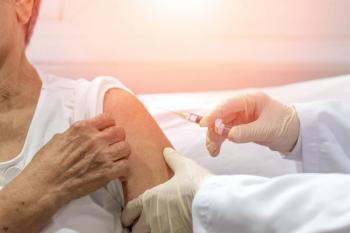
COVID-19 Positivity Disproportionately Affects Children, Racial and Ethnic Groups
Key Takeaways
- Omicron variant led to the highest COVID-19 positivity rates, notably impacting children, unvaccinated individuals, and specific racial and ethnic groups.
- Study covered five pandemic waves, analyzing data from four hospitals in New York City, revealing disparities in positivity and vaccination rates.
Investigators analyze COVID-19 positivity trends in NYC, revealing disparities among children and racial groups during the Omicron variant surge.
In New York City, investigators found a shift in positive COVID-19 infections, especially when the Omicron variant was prevalent. Further, they found that the positivity disproportionately affected children, unvaccinated individuals, and racial and ethnic groups.1
“In this large, urban, and demographically diverse cohort of adult and pediatric patients in NYC tested for SARS-CoV-2 by RT-PCR during several crucial waves of the COVID-19 pandemic, we observed dynamic shifts in positivity rates across age, race and ethnicity, testing site, and vaccination status,” the authors said.1 “These changes were pronounced during Wave 4, when the Omicron variant emerged, resulting in the highest positivity rates across all groups and with disproportionate impacts on young children, certain racial and ethnic groups, and unvaccinated individuals.”
On March 1, 2020, the first patient in New York was diagnosed with COVID-19, which quickly became one of the largest epicenters in the world. COVID-19 overwhelmed the health care system, causing a shortage of beds, personal protective equipment, ventilators, and staffing. In April 2020, the total global death rate was 137,193, with New York State accounting for 11,586, which was also 43% of the 26,708 in the US alone.2
Although no longer a pandemic, COVID-19 rates continue to fluctuate around the country. New York Governor Kathy Hochul announced the extension of executive order 52 in October 2025, which will allow pharmacists to continue to administer COVID-19 vaccines for patients. It is expected to be in effect for at least another 30 days while the state continues to work on long-term legislative solutions for immunizations.3
In the current review, investigators explored the positivity rates during vaccination as well as the changing variants during the height of the COVID-19 pandemic in New York City. They described the positivity rates and vaccination rates over the 5 ways of infection and evaluated the distribution of variants in adults and children over time. Four hospitals across a multihospital network in New York City were included from October 1, 2020, to September 19, 2022, across the 5 waves of the pandemic. The study population included patients older than 21 years as well as children 21 and under. In the study, Wave 2 (October 1, 2020, to June 30, 2021), Wave 3 (July 1, 2021, to December 1, 2021), Wave 4 (December 2, 2021, to March 5, 2022), Wave 5 (March 6, 2022, to June 12, 2022), and Wave 6 (June 13, 2022, to September 19, 2022) were included in the study.1
Investigators included 243,457 tests from adults and 29,333 tests from children, which had an overall positivity rate of 6.2% and 5.9%, respectively. The proportion of children tested varied by waves, with Wave 2 including 11.4%, Wave 3 including 14%, Wave 4 including 10.1%, Wave 5 including 5.9%, and Wave 6 including 5.6%. Approximately 37% of patients were white, 12% were Black, 13% were Asian, 0.1% were Native Hawaiian or other Pacific Islander, and 0.3% were American Indian or Alaska Native. Further, 15% identified as Hispanic and 61% as non-Hispanic.1
The positivity rate changed over time, with the most pronounced shift during Wave 4 (12.1%), where the Omicron BA.1 variant was prevalent. For the other waves, the positivity rates were 6.6% (Wave 2), 2.5% (Wave 3), 3.6% (Wave 5), and 6.9% (Wave 6). For vaccination rates, it increased as eligibility was expanded. However, children remained under-vaccinated compared with adults. The highest positivity rate for children was for those aged 5 to 12 years, followed by 1 to 4 years, 12 to 16 years, 16 to 21 years, and less than 1 year.1
For racial and ethnic groups, the highest positivity rates were for those who identified as Native Hawaiian or other Pacific Islander at 22.9% and Black patients at 16%. It was lowest for white patients at 10.2% and Asian patients at 11%, according to the study authors. Furthermore, patients who were identified as Hispanic had higher positivity rates at 16% compared with non-Hispanic individuals at 11% during Wave 4.1
As we anticipate future infectious threats in the setting of increasing vaccine hesitancy and loss of vaccine mandates, understanding trends in testing patterns, positivity rates, and vaccination across diverse populations will be essential to guiding future public health responses and vaccine efforts,” the study authors concluded.1
READ MORE:
Are you ready to elevate your pharmacy practice? Sign up today for our
REFERENCES
1. Velu PD, Thomas C, Rand S, et al. Changing epidemiology of SARS-CoV-2 positivity rates in a diverse population of children and adults during variant evolution and progressive vaccination eligibility in New York City. BMC Infect Dis. 2025;25(1):1548. Published 2025 Nov 11. doi:10.1186/s12879-025-11990-4
2. Kariya T. Rapid spread of COVID-19 in New York and the response of the community. Glob Health Med. 2020;2(2):123-126. doi:10.35772/ghm.2020.01032
3. Governor Hochul extends executive order ensuring all New Yorkers can receive the updated 2025-26 COVID shot. News release. Governor Kathy Hochul. October 5, 2025. Accessed November 12, 2025. https://www.governor.ny.gov/news/governor-hochul-extends-executive-order-ensuring-all-new-yorkers-can-receive-updated-2025-26
Newsletter
Pharmacy practice is always changing. Stay ahead of the curve with the Drug Topics newsletter and get the latest drug information, industry trends, and patient care tips.


















































































































































